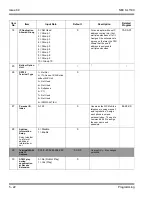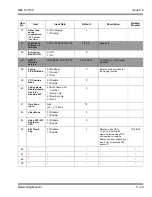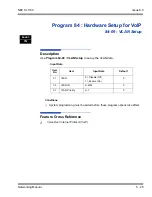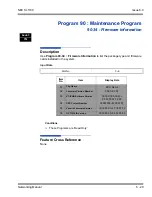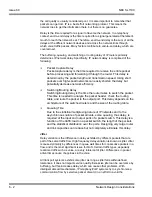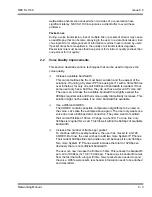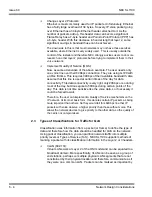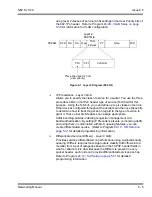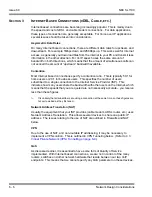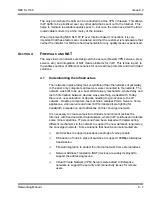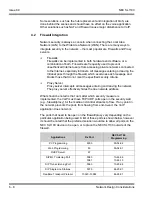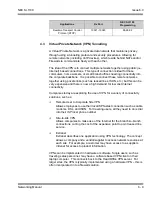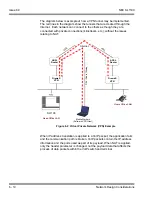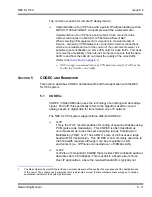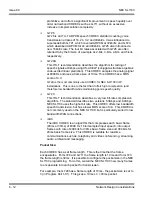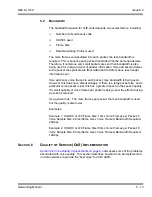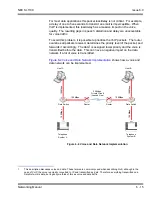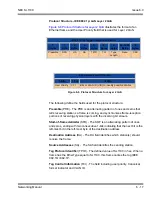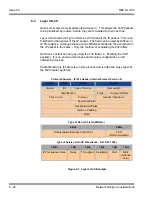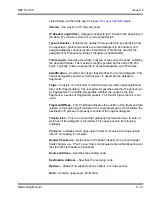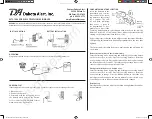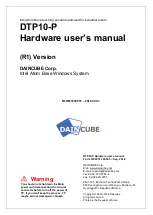
Issue 6.0
NEC SL1100
6 - 6
Network Design Considerations
S
ECTION
3
I
NTERNET
B
ASED
C
ONNECTIONS
(
X
DSL, C
ABLE
,
ETC
.)
Internet-based connections are becoming increasingly popular. This is mainly due to
the speed and cost of xDSL and cable modem connections. For data applications,
these types of connection are generally acceptable. For Voice over IP applications
several issues should be taken into consideration.
Asymmetric Data Rates
On many Internet based connections, there are different data rates for upstream and
downstream. For example 1Mbps down and 256Kbps up. This works well for Internet
access, as generally you download files from the Internet to your PC and transmit less
information in the other direction. For VoIP, speech uses the same amount of
bandwidth in both directions, which means that the amount of simultaneous calls can
not exceed the amount of “upstream” bandwidth available.
Contention
Most Internet based connections specify a contention ratio. This is typically 50:1 for
home users or 20:1 for business users. This specifies the number of users
subscribed to a single connection to the Internet Service Provider (ISP). This
indicates how many users share the bandwidth with other users on the Internet, which
means that the speeds that you are quoted are not necessarily accurate – you receive
less than these figures.
It is unlikely that all subscribers are using a connection at the same time, so these figures are
not quite as bad as they first seem.
Network Address Translation (NAT)
Usually, the equipment that your ISP provides (cable modem, ADSL router, etc.) uses
Network Address Translation. This allows several devices to share one public IP
address. The issues relating to the use of NAT are outlined in Firewalls and NAT
below.
VPN
Due to the use of NAT, and non-routable IP addressing, it may be necessary to
implement a VPN solution. This is outlined in VPN Tunneling below. (Refer to
Virtual Private Network (VPN) Tunnelling on page 6-9
QoS
As discussed earlier, it is essential to have some form of Quality of Service
implemented. With Internet based connections, we are not in control of the many
routers, switches and other network hardware that reside between our two VoIP
endpoints. This means that we cannot specify any QoS parameter on these devices.
Summary of Contents for SL1100
Page 1: ...Networking Manual NDA 31190 Issue 6 0 SL1100...
Page 2: ......
Page 4: ......
Page 22: ...Issue 6 0 NEC SL1100 1 2 Introduction THIS PAGE INTENTIONALLY LEFT BLANK...
Page 62: ...Issue 6 0 NEC SL1100 5 30 Programming THIS PAGE INTENTIONALLY LEFT BLANK...
Page 94: ...Issue 6 0 NEC SL1100 6 32 Network Design Considerations THIS PAGE INTENTIONALLY LEFT BLANK...
Page 134: ...Issue 6 0 NEC SL1100 8 10 DHCP Client THIS PAGE INTENTIONALLY LEFT BLANK...
Page 159: ...NEC SL1100 Issue 6 0 Networking Manual 9 25 Figure 9 7 Log In to IP Phone...
Page 181: ...NEC SL1100 Issue 6 0 Networking Manual 9 47 Figure 9 25 IP System Operation Setup...
Page 206: ...Issue 6 0 NEC SL1100 9 72 IP Multiline Station SIP Figure 9 36 NAPT Configuration Example...
Page 230: ...Issue 6 0 NEC SL1100 10 18 IP Single Line Telephone THIS PAGE INTENTIONALLY LEFT BLANK...
Page 232: ...Issue 6 0 NEC SL1100 11 2 NAPT Figure 11 1 NAPT Configuration Example...
Page 242: ...Issue 6 0 NEC SL1100 12 4 All DSP Busy Indication THIS PAGE INTENTIONALLY LEFT BLANK...
Page 290: ...Issue 6 0 NEC SL1100 13 48 SL Net THIS PAGE INTENTIONALLY LEFT BLANK...
Page 291: ......
Page 292: ...SL1100 Networking Manual NEC Corporation of America Issue 6 0...

